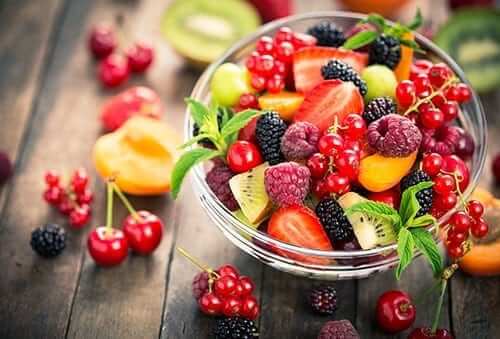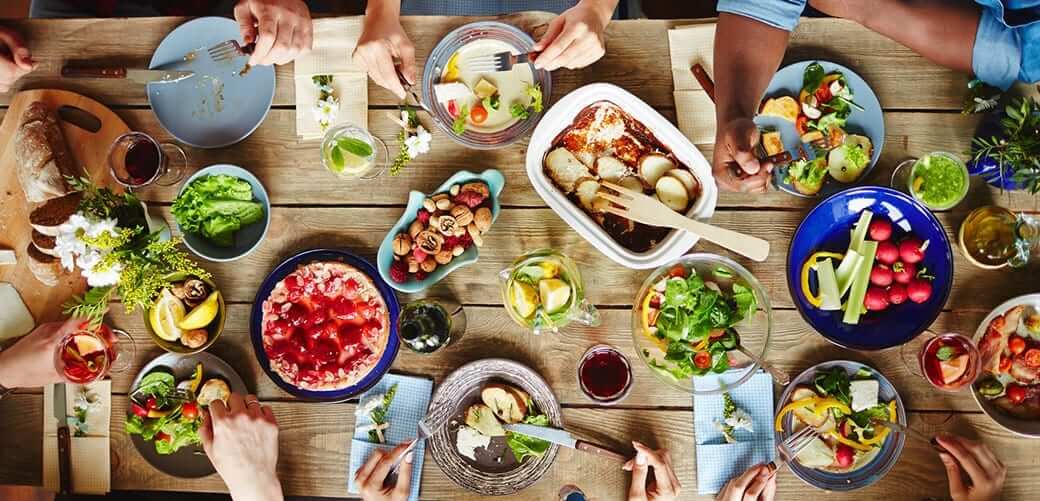Since the holiday season has ended, I have been counseling diabetes patients who are unhappy with their seasonal weight gain along with elevated A1C values and uncontrolled daily blood sugars. Many of their physicians have “threatened them with insulin” unless they give “diet and exercise” a real try. Some patients just rather take the medication then be committed to change, but most definitely want to give the “diet and exercise” route a fair chance. The information below is tried and true for many patients I have counseled since 1990 to achieve better health in the New Year. Some of the tips are from well-known and respected medical websites and others are from actual patients with diabetes who have learned over the years what works best for them.
There is no a “food tear sheet” list telling you what to eat for breakfast, lunch and dinner. Patients tend to enjoy a fixed list telling them what to eat and when. That gets boring and tedious early on and meal plans need to be individualized with different choices for each patient. Some cultures eat rice three times a day and others do not care if they ever eat rice. Here are some general guidelines to help you make 2017 a more nutritionally sound year for just you. These tips may help improve your cholesterol, triglycerides, blood pressure and blood sugar response.
1. Avoid Processed, Bagged and Boxed Food
Avoid all or as much processed, bagged or boxed foods as possible. The term used now is “clean eating” but it just means your food should be identifiable with the least amount of unpronounceable ingredients. Look for food labels with no more than 3-5 ingredients if it is not a whole, natural food. Most processed foods are loaded with excess sodium, sugar and preservatives. These ingredients are known to cause systemic inflammation which is a precursor to chronic diseases such as heart disease, cancer, rheumatoid arthritis and diabetes. People who eat a highly processed diet tend to have high C-reactive protein levels which indicates elevated inflammation.
2. Including Avoiding Processed Meats
Avoid all or as many processed meats as you can. This includes bacon, salami, hot dogs, bologna, sausage patties or links and regular deli meats. These foods are full of saturated fat and salt which will also lead to inflammation and chronic illness. Look for turkey off the breast and oven-roasted roast beef instead.
3. Eat Foods That Naturally Fight Inflammation
Add foods that naturally fight systemic inflammation. Nuts, garlic, onions, leeks, dark leafy greens, tart cherries, ginger, turmeric, berries, beets, fatty fish and tomatoes are easy foods to add that are diabetes friendly and can help decrease body inflammation.
4. Portion Control is Your Friend
Learn portion control. Learn to stop eating before you feel full, stuffed or bloated. Think about feeling satiated without the sense “I may never want to eat again” or “why did I just do that?” Portions continue to be too big at most restaurants especially buffets. Understand that food left over after eating out should become the routine and not the exception. Forget the bread basket and butter or eat just one piece of bread dipped in olive oil and stop there. Factor in the bread as part of your carbohydrate intake for that meal. Order a green salad instead with the dressing on the side to take the edge off hunger. We need to re-learn portion size from what we see when eating out and return to eating what we require not necessarily what we want. A cheap set of dry measuring cups will do the trick as well as a 3 compartment Tupperware plate which helps you recognize portion size.
5. Eat Lots of Lean Meats

6. Lean Towards Low-Fat Dairy
The popular news and literature keeps switching between fat-free, low-fat and full-fat diary as best choices. Most patients are quite satisfied with low-fat dairy for taste. Purchase low- fat yogurt, milk and Kefir. Quality high-fat cheese can be eaten in small amounts since it has the most intense flavor and only requires a little bit. Blue cheese, Feta, Boirsin, Swiss and Parmesan are rich and creamy and can be added to your dishes. Hard cheese is low in lactose and good for people who suffer from lactose intolerance.
7. Whole Grains Will Keep You Healthy
Whole grains and exotic rice. Yes, they are allowed in a balanced eating plan even with diabetes if you choose to eat them. Branch out from the standards and add quinoa, bulgur, barley, amaranth, millet and farro. Look for black rice, yellow rice and wild rice. They are simple to cook once you read the directions. They may require pre-rinsing to wash off some of the starch. Grains give you energy, fiber and staying power.
8. Fresh Fermented foods
The gut seems influential in our overall health. Fermented foods offer “live probiotic cultures.” Look for new foods such as miso, tempeh, sauerkraut (high in sodium) and kimchi. You may need to find a specialty store or ask around to find these different foods. If you purchase these products “off the shelf” then the live cultures are killed off. Look for them fresh.
9. You Still Need Fats
Healthy fats that is. Fats are “fattening” but they can and should be included in your meal plan in moderation. Use olive or canola oil for cooking. Include avocadoes, olives and walnuts for Omega-3 and good heart health. Try seeds such as pumpkin, sunflower, chia and flax which will help you feel full and are nutritional powerhouses.
10. Spice Up Foods (Without Salt)
Use low-sodium broth, cooking wines, flavored vinegars, fresh and dried spices to make your foods tasty without salt, fat or added calories.
11. ALWAYS Eat Breakfast
So many patients say they are not hungry in the morning and feel like they can achieve weight loss quicker by skipping meals. This tends to backfire with diabetes for multiple reasons. One reason to eat in the morning is many medications should be taken with food. Exceptions do include thyroid medication such as Levothyroxine, stomach reflux medications such as Omeprazole or Glipizide, a diabetes medicine, which should be taken 30 minutes prior to eating breakfast. Insulins such as Novolog, Humalog or an insulin mix should be taken prior to eating. Another reason to eat breakfast when you have diabetes is to help the liver stop producing glucose from the nights fast. Eating breakfast helps to jumpstart your metabolism and gives you fuel to use after a night of sleep. People who skip breakfast tend to overeat later in the day since they become hungrier. Breakfast should include a high fiber, whole grain food with a lean protein. It can involve simple preparation such as Greek plain yogurt with fresh berries and a handful of walnuts or eggs with whole grain toast.
12. Learn to Compromise
Giving up everything you love is basically impossible and really not required whether you have diabetes or not. Do not suffer, be deprived or starve. Just choose to make informed and better choices. Try to give up all sweet drinks including real fruit juice, soda, sweet tea, lemonade, fruit smoothies, Gatorade, fruit punch or coconut water in cans or boxes. Drinking calories when you have diabetes adds up quickly and can play havoc with blood sugars. Find ways to include the tastes of the drinks you love without the sugar and calories. I have a patient who squeezes fresh lemons in the morning, adds plain water and a bit of Stevia and finds this her drink of choice all day long.

Office food is a big problem for many people. There is the vending machine and the front desk office cookie/candy jar. There are the merchants who bring boxes of donuts and bagels which can be irresistible. Be prepared with your own desk stash. Winter fruits such as apples, pears and oranges can last all week without a problem. Keep low-calorie snacks in your desk when the sweet tooth, late afternoon craving set in. Purchase Kind or Lara Bars which contain up to 3 natural ingredients such as fruit, nuts and natural flavoring. Keep mini-bags of popcorn which is either ready to eat or just requires a minute in the microwave. Buy single serving almond snack bags or put 10 almonds with a spoonful of raisins in a baggie which is now ready to go. If you have access to a refrigerator, store snacks like hummus. Consider a few spoons of hummus with carrot or celery sticks or small low-sugar/low-fat yogurt. Keep water or unsweetened tea at your desk and stay hydrated to take the edge off hunger.
13. Space Meals and Never Skip
Try to eat something every 4-6 hours and do not “save calories” for the end of the day. Your energy system is broken and feeding it small amounts allows your body to handle the sugar load. Make time to eat.
14. Its Okay to Eat Fruits!
Fruits can be part of the plan along with vegetables. So many patients think fresh fruit is the diabetes enemy. As long as you are counting it as a carbohydrate in a meal plan, you can easily incorporate any kind of fruit you want. You should eat less mango compared to blueberries but no fruit is off limits. Watch out for dry fruit since it is much more concentrated in sugars. You can choose from fresh or frozen as the best options. Eat fruit in season since it will be cheaper and much more flavorful. Eat fruits high in vitamin C during the winter to help ward off colds such as oranges, kiwi and pineapples Fruits are high in antioxidants which will help your immune system stay strong during the flu months. Watch out when buying fruit at a warehouse store. You end up buying in bulk and tend to overeat especially if you live by yourself. Try to add a new green vegetable to your selection for each month of the year. Many people stick to the basic iceberg lettuce. Add Bok choy, asparagus, kale, chicory, watercress, mustard greens, arugula, romaine and zucchini squash.
15. Sugar-free Does Not Mean Calorie Free
Some patients still think if the dessert is a sugar-free product like candy, cake, and cookies that they get to eat as much as they want. Not true! Sugar-free is not calorie or carbohydrate free and may lead to an upset stomach. You may find that a bite of regular dark chocolate can curb the craving faster than all the artificial stuff.
16. Above All – Do Not Eat Out of Emotion
Work hard this year finding a better strategy than eating out of stress, fatigue, sadness, worry, boredom, anxiety or happiness. Coping mechanisms range from going for a walk, exercising, reading, listening to music, praying, meditating, mental health counseling or anything you decide that can replace eating as a coping mechanism.
Eating in the real world can be easy, delicious and keep your blood sugars in check with just a few simple changes in 2017. Try some of these tips and modifications and see if it works for you!
Have a question or comment? Post below or email me at RKleinman@adwdiabetes.com if you would like to share them with ADW diabetes.
NOTE: Consult your Doctor first to make sure my recommendations fit your special health needs.







Leave A Comment